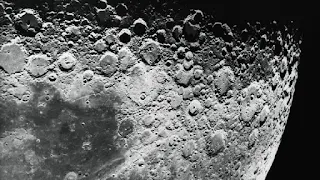The results of research conducted by the Indian Space Research Organization (ISRO) indicate that there is a high probability of water ice forming in the polar craters of the Moon.
The organization’s statement published on its website stated: “Recent studies have discovered evidence that there is a high probability of water ice forming in the moon’s polar craters. The amount of ice present at a depth of a few meters is approximately 5-8 times greater than what is present on the surface at both poles.”
He adds: "Therefore, drilling on the Moon to sample or extract this ice will be of utmost importance for future missions and human existence in the long term."
According to these data, the area of water ice at the North Pole of the Moon is twice as large as at its South Pole. The study also confirms the hypothesis that the main source of subsurface water ice at the poles of the Moon was the release of gas during volcanic activity during the Embryonic period (a geological period in the history of the Moon).
It is noteworthy that, in addition to the experts of the Indian Space Research Organization, experts from the Indian Institutes of Technology and experts from NASA's Jet Propulsion Institute are participating in these studies, based on the analysis of data obtained from devices installed on the Indian lunar orbital station Chandrayaan-2 and NASA's lunar reconnaissance vehicle.
Tags:
chandrayaan-2
indian space research organization
isro
moon
moon water
nasa
science
space science
universe mystery





Wow!! Interesting
ReplyDeletenoteworthy that, in addition to the experts of the Indian Space Research
ReplyDeleteGud
ReplyDeleteGood
ReplyDeleteorganization’s statement published on its website stated: “Recent studies
ReplyDeleteGood
ReplyDelete42
ReplyDeleteGood
ReplyDeleteGud
ReplyDeleteAccording to these data, the area of water ice at the North Pole of the Moon is twice as large as at its South Pole. The study also confirms the hypothesis that the main source of
ReplyDeleteGood
ReplyDeleteGood
ReplyDeleteGood
ReplyDeleteGreat
ReplyDelete